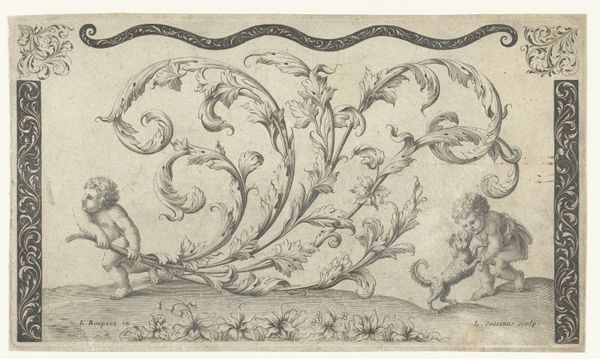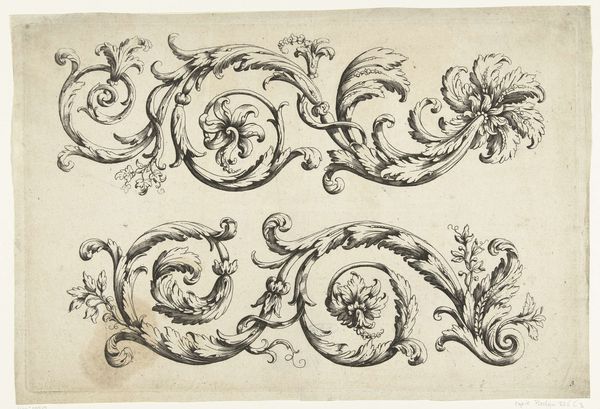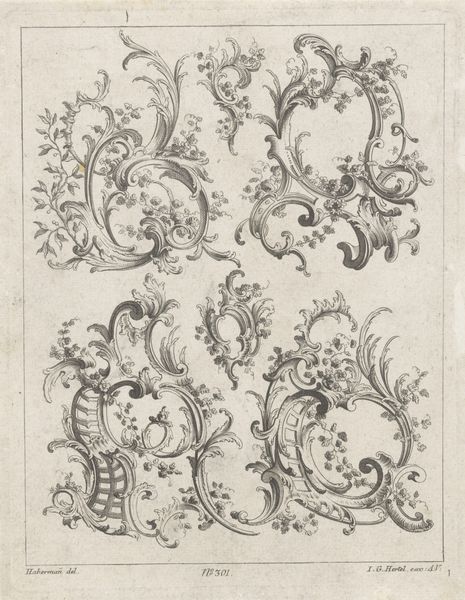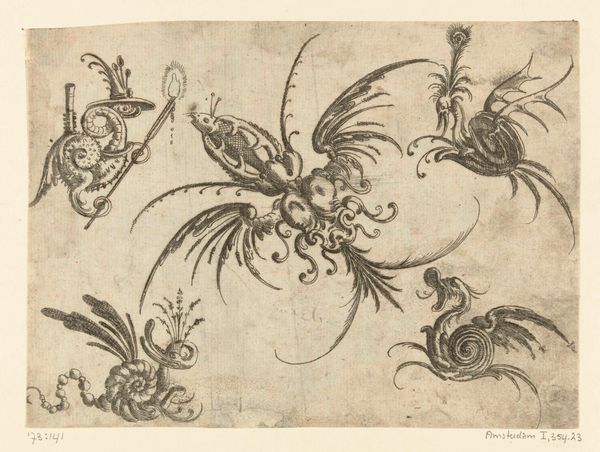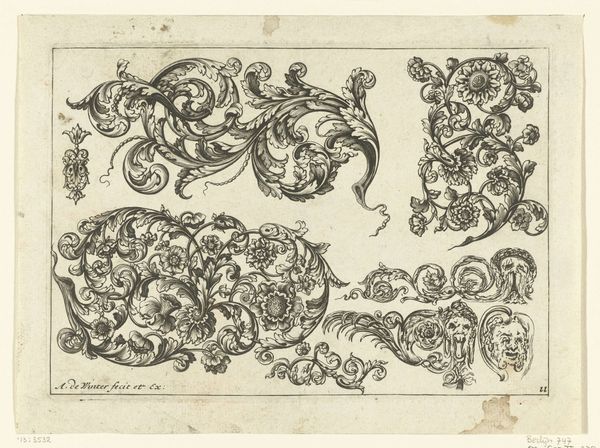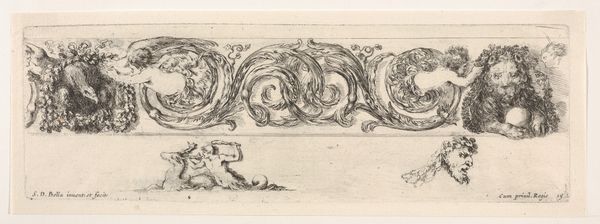
drawing, print, engraving
#
drawing
#
allegory
# print
#
form
#
11_renaissance
#
geometric
#
line
#
northern-renaissance
#
engraving
Dimensions: height 82 mm, width 135 mm
Copyright: Rijks Museum: Open Domain
Daniel Hopfer created this metal cut of a surface decoration with a seahorse sometime around the turn of the 16th century in Germany. Consider that at this time, the printing press was rapidly changing the way knowledge and images circulated around Europe. Hopfer was one of the first artists to apply etching techniques to metal, influencing printmaking for centuries to come. Ornament prints like this one reflect the interests of wealthy patrons in classical antiquity, and were used as templates by artisans in other media. The image creates meaning through the visual codes of classical antiquity, in the form of scrolling acanthus leaves, putti, and fantastic creatures from mythology. We can interpret this print as part of a larger cultural trend that looked to the distant past for inspiration. As art historians, we use museum collections, period documents, and other scholarly resources to deepen our understanding of this print and its place in the history of art. The meaning of art is always contingent on the social and institutional contexts in which it is made and received.
Comments
No comments
Be the first to comment and join the conversation on the ultimate creative platform.
